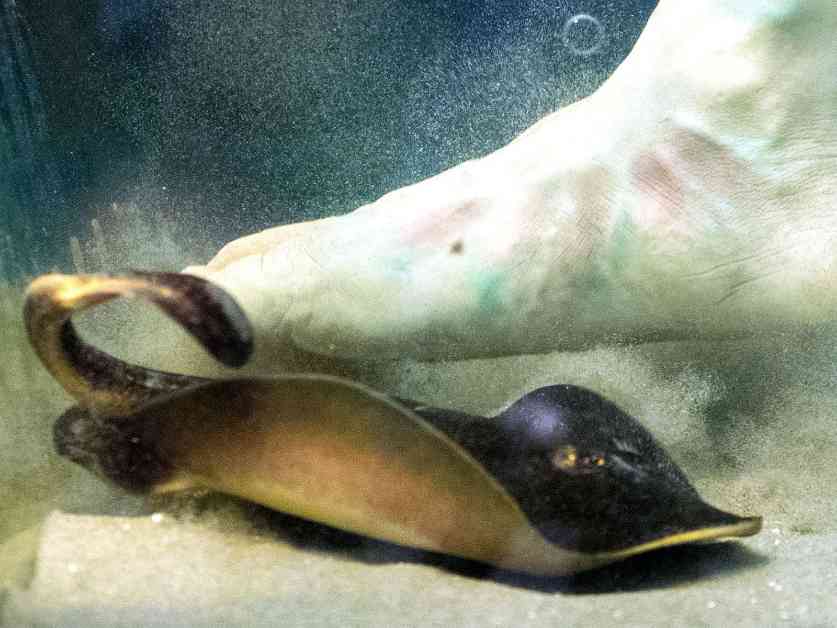Stingray 12 remains surprisingly calm as researchers at California State University, Long Beach, conduct an experiment to understand how stingrays react when they come in contact with people. The ray, about the size of a dinner plate, is submerged in a tank filled with sand, barely moving as the researchers observe her behavior.
The lab, known as STABB (Stingray and Butterfly Biomechanics Lab), focuses on studying round rays, which are the most common species in California waters. Unlike other rays that quickly flee when sensing danger, round rays tend to stay buried in the sand, making them more susceptible to accidental encounters with humans. This behavior contributes to the majority of stingray injuries in California being attributed to round rays.
Stingrays have barbs on their tails that can release a toxin when they strike, causing painful injuries to humans. Understanding the dynamics of stingray strikes is crucial in developing protective measures for beachgoers in Southern California. Researcher Ben Perlman’s experiments involve using a 3D-printed silicone human foot to simulate human encounters with stingrays and observe their reactions.
The initial findings reveal that stingrays are more likely to strike when their midbody is threatened, where their vital organs are located. This information can help individuals avoid stingray strikes by using techniques like the “stingray shuffle,” where beachgoers take small steps to avoid stepping on the midbody section of a buried ray.
In addition to studying stingray behavior, researchers are also testing new materials, like neoprene with a rubber composite lining, to create stingray-proof gear for surfers and swimmers. By understanding the neuromuscular mechanisms behind stingray strikes, researchers aim to develop effective strategies to prevent injuries and promote safety at the beach.
Perlman’s research extends beyond stingray strikes to explore various aspects of stingray biology, including how they bury themselves in the sand and the regrowth patterns of their barbs. By utilizing advanced imaging techniques and conducting experiments in different environmental conditions, the lab aims to gain a comprehensive understanding of stingray behavior and anatomy.
While sharks often dominate discussions about marine safety, stingrays pose a significant risk to beachgoers due to their prevalence and defensive mechanisms. By raising awareness about stingray injuries and conducting in-depth research on stingray behavior, researchers hope to mitigate the risks associated with encounters between humans and these unique marine creatures.
As Perlman and his team continue their research, they are dedicated to providing valuable insights that can enhance safety measures and promote coexistence between humans and stingrays in California’s coastal waters. Through their ongoing experiments and studies, the lab aims to create a safer environment for beach enthusiasts and marine life alike.

